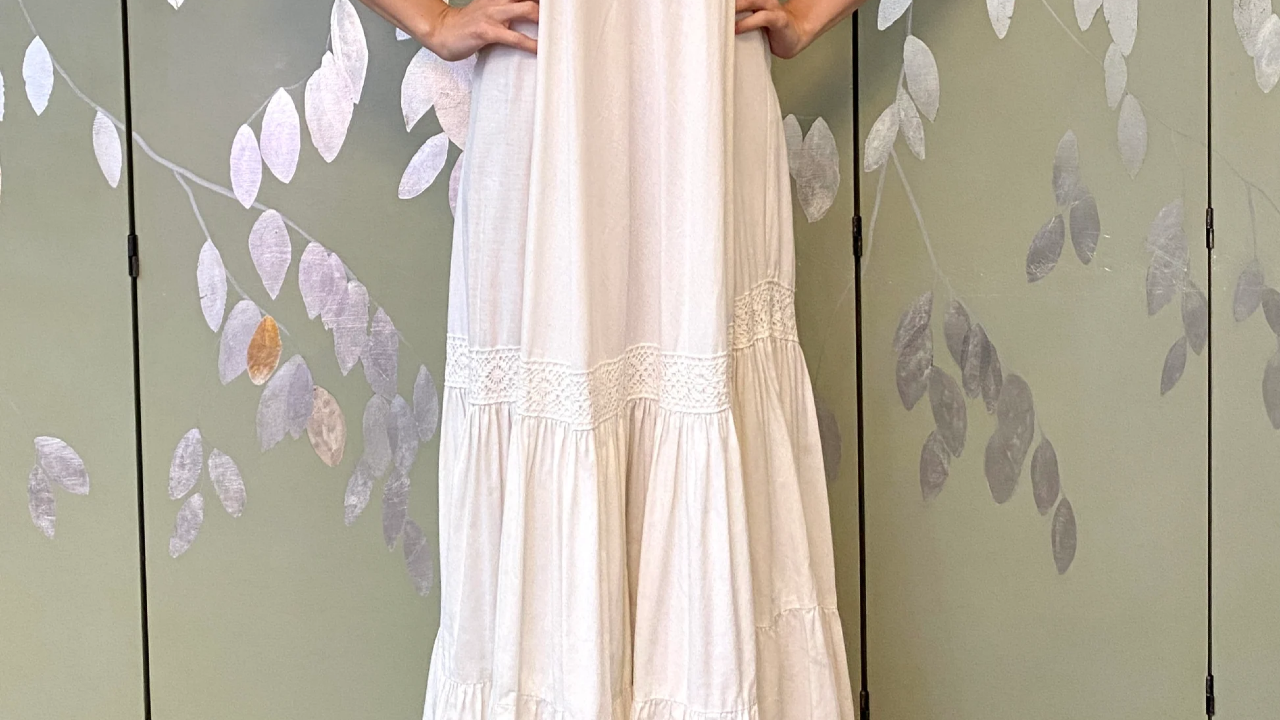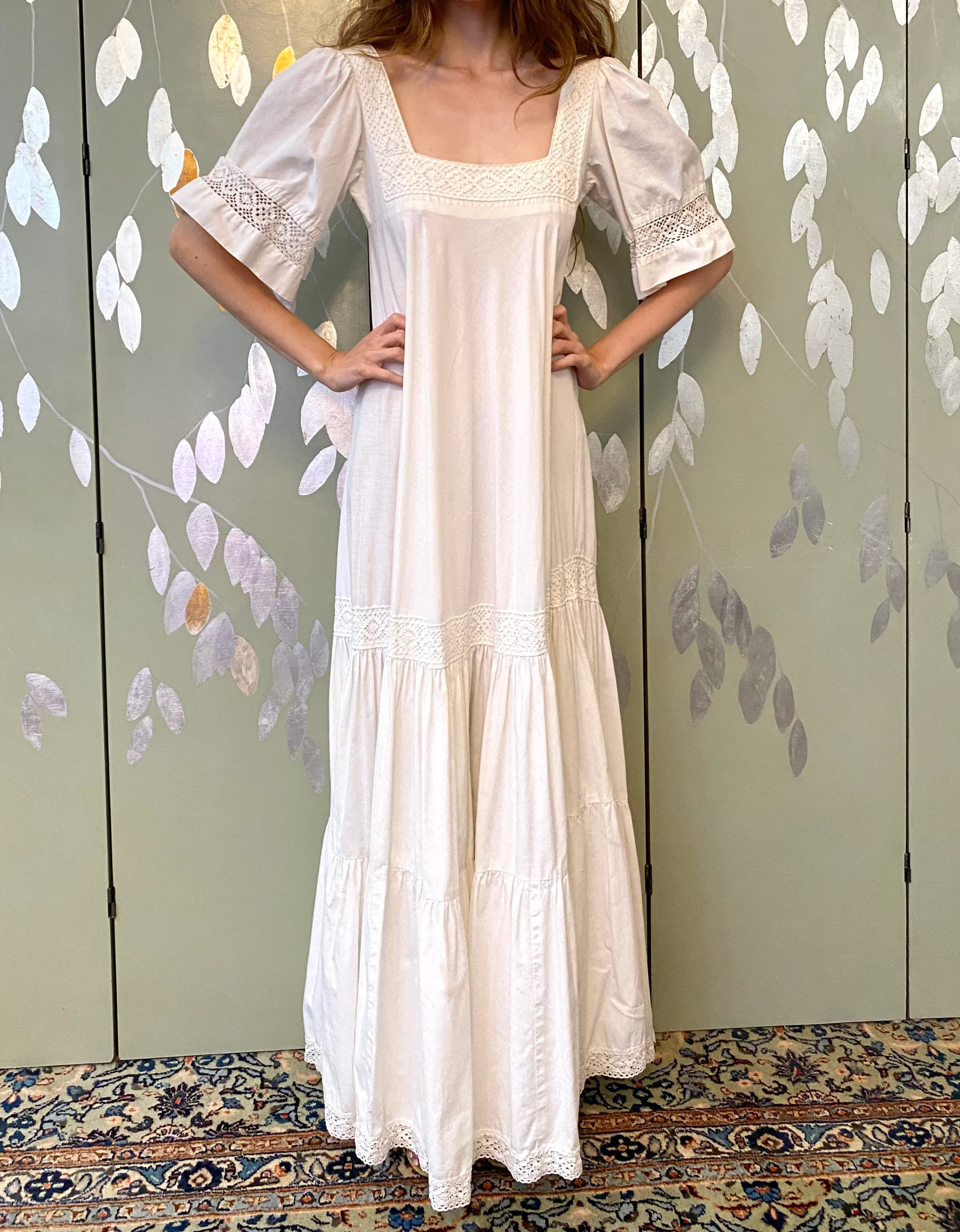AllVintageStyles
Vintage fashion encyclopedia
Maxi Dress


A 1970s maxi dress is a floor-length or ankle-length dress featuring flowing silhouettes and bold prints that embodied the decade's embrace of bohemian freedom and feminine expression across both counterculture and mainstream fashion.
Quick Facts
- Era: 1970s (peak popularity 1970-1978)
- Origin: United States (influenced by hippie counterculture and international bohemian styles)
- Garment Type: Floor-length dress with flowing silhouette
- Key Identifiers: Ankle or floor length, empire waist or high waistline, bold prints or earth tones
- Typical Resale Price: $60-$400 (authentic vintage pieces)
- Best For: Bohemian fashion enthusiasts, music festival wear, and vintage evening occasions
History & Evolution
The maxi dress emerged in the late 1960s from the hippie counterculture movement and gained mainstream acceptance throughout the 1970s as women embraced clothing that offered both comfort and feminine expression. The style represented a rejection of the mini dress's restrictive nature while maintaining the decade's emphasis on natural, flowing silhouettes inspired by ethnic and peasant clothing.
During the mid-1970s, maxi dresses evolved beyond bohemian circles to become acceptable evening wear and formal attire. Designers created elegant versions in luxurious fabrics for the disco era, while casual cotton and polyester versions became everyday staples. The style perfectly captured the decade's dual nature of counterculture rebellion and glamorous nightlife.
By the late 1970s, changing fashion trends toward more structured silhouettes led to the maxi dress's decline, though it remained popular for special occasions. Today, authentic vintage 1970s maxi dresses are prized by collectors for their quality construction, bold prints, and representation of the decade's free-spirited aesthetic and feminine empowerment.
Authentication Tips
Authentic 1970s Features:
- Natural fabrics like cotton, jersey, or early polyester blends
- Empire waistlines or high-waisted construction typical of the era
- Quality screen-printed or woven patterns with period-appropriate designs
- Vintage sizing that runs smaller than contemporary measurements
- Designer labels from 1970s brands or department store private labels
Common Reproductions/Modern Pieces:
- Modern stretch fabrics or contemporary synthetic blends
- Low-waisted or contemporary fit that contradicts 1970s proportions
- Digital prints or patterns that use modern printing techniques
- Contemporary sizing that doesn't match vintage measurements
- Poor quality construction lacking the substantial feel of vintage garments
Styling & Use Cases
- Best for bohemian enthusiasts: Pair with fringe vests, layered jewelry, and sandals for authentic hippie-inspired styling
- Ideal for festival wear: Style with denim jackets, wide-brimmed hats, and boots for modern bohemian festival looks
- Perfect for elegant occasions: Combine with vintage accessories and heels for sophisticated 1970s evening wear
Modern styling tips:
- Belt at the natural waist to create contemporary proportions while maintaining vintage flow
- Layer with cropped cardigans or kimono-style jackets for updated bohemian styling
- Pair with modern ankle boots or contemporary sandals to bridge vintage and current fashion
FAQ
Q: How can I tell if a maxi dress is authentic 1970s vintage?
A: Look for natural fiber construction, empire or high waistlines, period-appropriate prints and colors, vintage sizing that runs small, and quality construction typical of 1970s garment manufacturing. Designer labels add authenticity and value.
Q: What's the typical price range for vintage 1970s maxi dresses?
A: Authentic vintage maxi dresses range from $60-$400 depending on designer, fabric quality, condition, and rarity of print. Designer pieces or exceptional examples command higher prices among vintage fashion collectors.
Q: How should I care for a vintage 1970s maxi dress?
A: Check fabric content and care accordingly - cotton pieces may be gently machine washed, while polyester or delicate fabrics should be dry cleaned. Store hanging to maintain the flowing silhouette and prevent wrinkles.
Q: What makes 1970s maxi dresses valuable to collectors?
A: Their representation of 1970s counterculture and feminine liberation, quality vintage fabric construction, bold artistic prints typical of the era, and embodiment of the decade's free-spirited aesthetic make them significant pieces for vintage fashion enthusiasts.
📷: Ian Drummond Vintage
